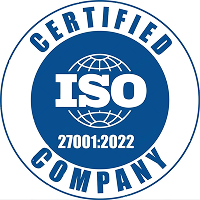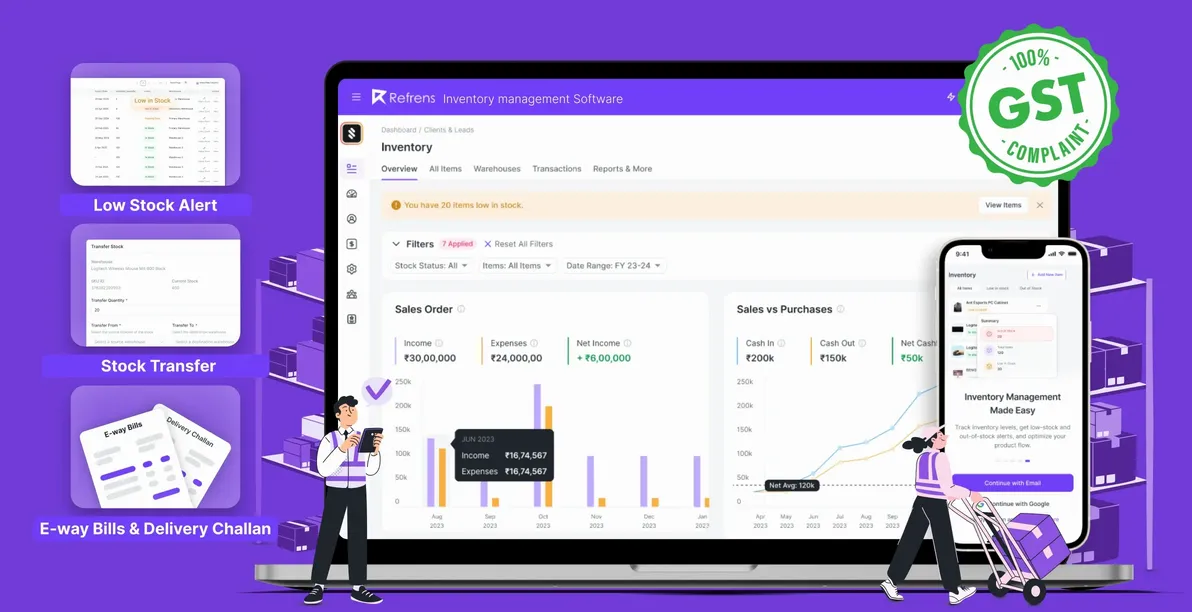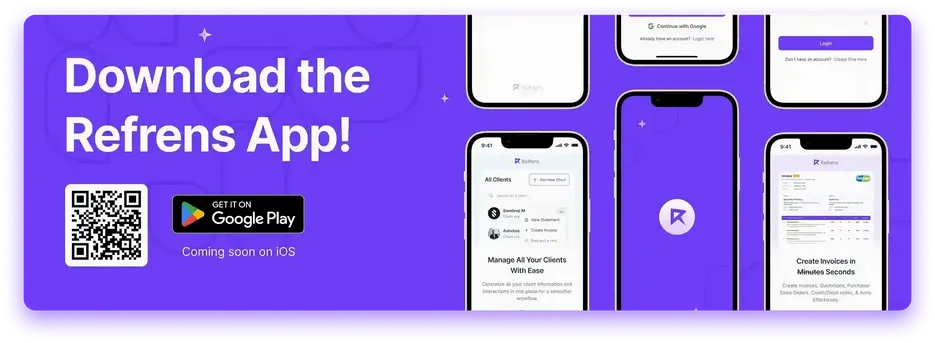Experts on Refrens Inventory Management Software

Benefits of Inventory Management Software
















Some of the smartest entrepreneurs of India are backing our vision.
People who understand money, business, and all things Internet.


Why choose Refrens?
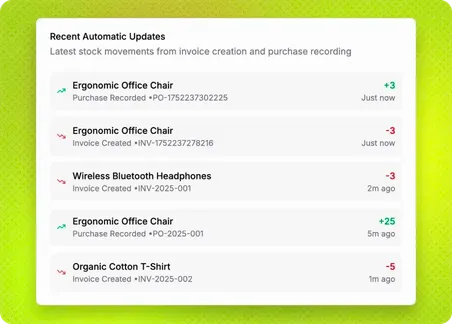
Seamlessly update stock levels every time an invoice is created or a purchase is recorded, ensuring your inventory is always accurate and up-to-date.
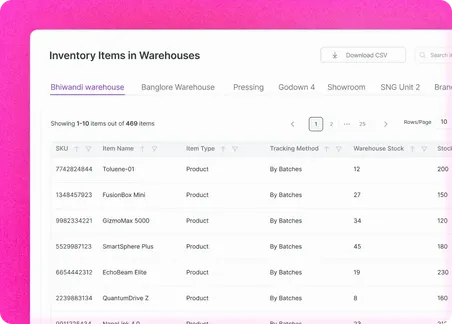
Effortlessly manage inventory across multiple branches and warehouses, providing a centralized view of stock levels and facilitating smooth operations.
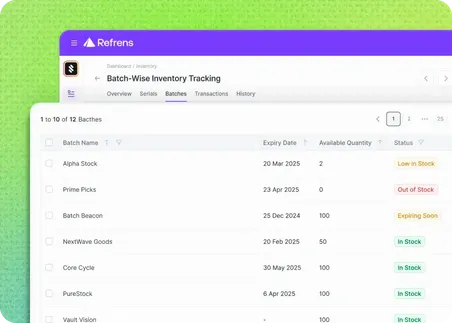
Track inventory by batch or serial number to manage expiry dates, warranties, and product history.
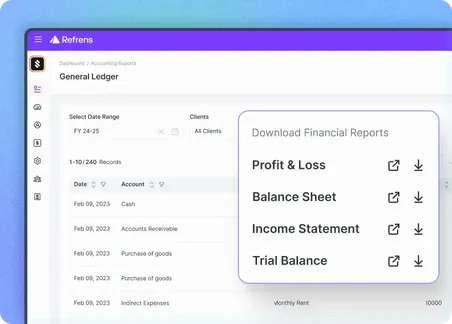
Automatically record journal entries in the respective ledgers whenever an inventory item is sold or purchased, simplifying your accounting processes.
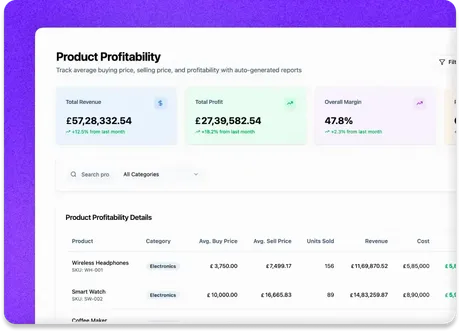
Track average buying price, average selling price, and product-wise profitability with our auto-generated reports.

Streamline inventory operations by adding or transacting items using a barcode scanner. Simplify product identification and speed up processes for accurate inventory management.
Refrens Inventory Management Software suited to fit a variety of industries.
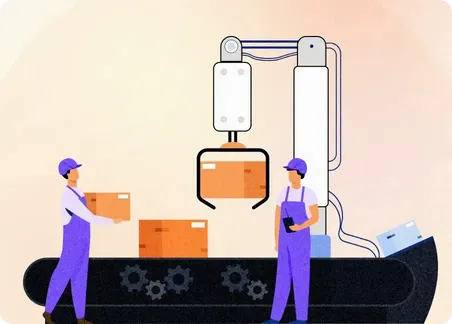
Managing inventory is a critical yet challenging aspect for manufacturing business, Refrens provides a powerful inventory management solution designed to simplify this process. With Refrens, you can easily track your inventory throughout every stage of production, helping to minimize errors and reduce waste. This level of optimization boosts efficiency, ensuring a more streamlined workflow.

Refrens simplifies inventory management for wholesale businesses by providing real-time tracking, easy order management, and seamless GST compliance. It helps maintain accurate stock levels, reduce errors, and streamline operations across multiple locations, saving time and costs.

Refrens makes inventory management easy for e-commerce businesses. It helps you track stock, manage orders, and stay GST-compliant. With real-time updates and simple integration, you can reduce mistakes, avoid stockouts, and run your business more efficiently, saving time and money.

Refrens simplifies inventory management with its retail accounting software. It helps you track stock, manage sales, and stay GST-compliant. With real-time updates and easy-to-use features, you can reduce errors, prevent stockouts, and streamline your shop’s operations efficiently.

Managing medicines and medical supplies is crucial for pharmacy and medical shops. Refrens helps ensure accurate inventory tracking, making it easy to monitor expiry dates, batch numbers, and stock levels. This not only safeguards customer health but also ensures compliance with GST rules and regulations.

Managing materials and supplies is critical in the construction business. Refrens helps you track inventory, monitor usage, and manage orders efficiently. With features to track stock across multiple sites and ensure GST compliance, Refrens streamlines operations and reduces wastage, saving time and costs.
Happy Customers





Start for free, upgrade when you are sure.
Only pay when you need premium features

Frequently Asked Questions (FAQ)
Refrens is a one-stop platform for your accounting, admin, and sales team to manage invoicing, accounting, expenditures, inventory, sales, and other business processes.
1.5L+ businesses across 178+ countries have simplified their day-to-day business operations with Refrens.
Protecting your data is our top priority. Businesses worldwide trust Refrens to handle critical operations securely. For details on how we safeguard your information, refer to our privacy policy: Privacy Policy.
Refrens ensures 99% uptime, delivering a dependable platform for uninterrupted business operations. You can rely on Refrens to provide consistent and high-quality performance.
Absolutely. Refrens is built to scale alongside your business. Our cloud-based infrastructure allows for seamless scalability, with regular updates and new features to accommodate your growth without compromising performance.
Refrens offers a free plan with essential features to help you get started with ease. For more advanced features and additional tools, we also offer paid plans tailored to your specific business needs.
For any assistance, you can reach out to us via live chat support, drop an email at care@refrens.com, or message us on WhatsApp at +919104043036.
- Cloud Accounting Software
- |
- AI Accounting Agent
- |
- GST Billing Software
- |
- e-Way Bill Software
- |
- e-Invoicing Software
- |
- Invoicing Software
- |
- Quotation Software
- |
- Lead Management Software
- |
- Sales CRM
- |
- Lead to Quote Software
- |
- Expense Management Software
- |
- Invoicing API
- |
- Online Invoice Generator
- |
- Quotation Generator
- |
- Quote and Invoice Software
- |
- Pipeline Management Software
- |
- Invoicing Software for Freelancers
- |
- Indiamart CRM Integration
- |
- Billing Software for Professional Services
- |
- Invoicing Software for Consultants
- |
- Inventory Management Software

